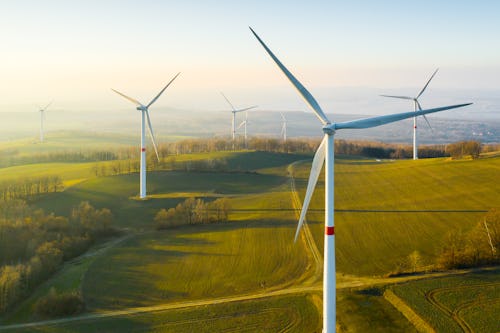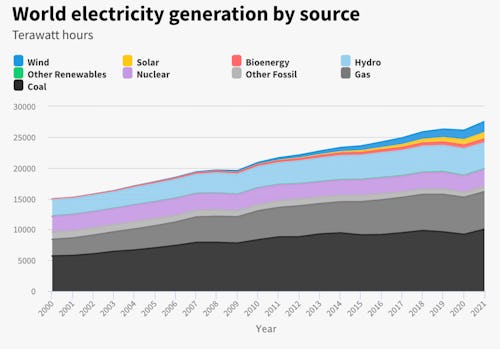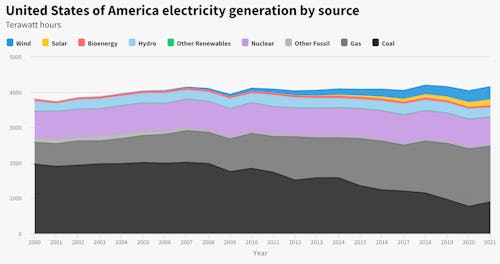
Energy think tank Ember released its third annual “Global Electricity Review” this week. The good news: clean energy use is increasing. The bad news: coal-fired electricity use is rising even faster — at the highest rate since 1985.
After decreasing coal use since 2014, the U.S. saw its first annual increase in coal in 2021, rising from 773.4 TWh to 898.7 TWh: more than a 16% increase. Other large economies, like China and India, saw hefty coal increases too.
Clean and green —
Though 62 percent of the world’s electricity came from fossil fuels in 2021, some individual countries are surging ahead with renewables. Currently, the most rapid adopters of wind of solar include the Netherlands, Australia, and Vietnam, each of which has switched over one-tenth of their electricity from fossil fuels to wind and solar in the past two years.
Overall, the countries that generate the largest portion of their electricity use from wind and solar are Denmark (52 percent), Uruguay (47 percent), and Luxembourg (43 percent).
Ember’s 2021 data include stats from 75 countries, in total representing 93 percent of global power demand. And while not every country is investing equally in clean energy, all five of the world’s largest economies (U.S., China, Japan, Germany, and the U.K.) each generated at least 10 percent of their energy from renewable sources. That 10 percent isn’t huge, but it’s something.
According to the report, clean electricity sources generated 38 percent of the world’s electricity in 2021, more than coal (36 percent).
“Governments like the U.S., Germany, U.K., and Canada are so confident in clean electricity that they are planning to shift their grid to 100 percent clean electricity within the next decade and a half,” the report says. “But with coal still rising and electricity demand continuing to increase, all governments with carbon-intensive grids now need to act with that same boldness and ambition.”









